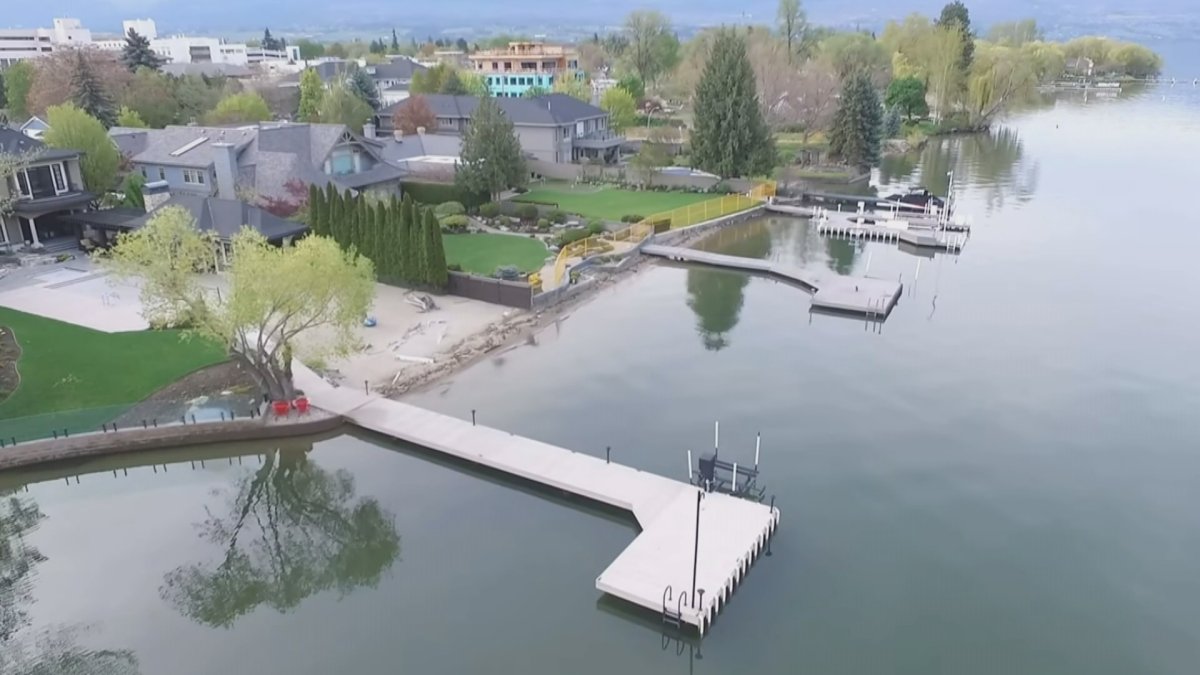A survey of the entire shoreline of Okanagan Lake has revealed the ongoing environmental impacts of development.

The condition of the 290 kilometres of foreshore was first catalogued in 2011 and again last year in a $60,000 research project initiated by the Regional District of Central Okanagan.
The latest mapping and inventory shows 59 per cent of the foreshore has been developed with the remainder in its natural state.
Between 2011 and 2016, a further 4.1 kilometres representing 1.42 per cent of the natural shoreline has been permanently altered.
The changes include vegetation removal, 164 new docks and nine additional marinas.
As well, 165 more retaining walls were built over the five year period that impacted 1.45 kilometres of foreshore.
“Each small change to the natural areas around the lake has a negative cumulative effect on the natural ecosystem to function and provide services such as clean drinking water, water infiltration, flood control and critical habitat for fish and wildlife.” says project Senior Biologist Jason Schleppe in a news release.
Schleppe says at the current development rate, the natural foreshore that is not in parks or protected areas could be completely lost in 40-160 years.
The mapping inventory shows about 70 per cent of the Okanagan Lake shoreline has been altered in Kelowna and West Kelowna.
In the District of Peachland, the foreshore disturbance is almost 84 per cent while in Lake Country the number is 54.5 per cent.
“The foreshore has significant ecological, cultural and economic values and is extremely sensitive to disturbances,” says Scott Boswell.
He’s the Program Manager for the Okanagan Collaborative Conservation Program which is one of the five partners in the mapping project.
The regional district says depending on funding availability, the 2016 data could be used to evaluate the impact of this year’s flooding on the foreshore.
- Invasive strep: ‘Don’t wait’ to seek care, N.S. woman warns on long road to recovery
- Ontario First Nation declares state of emergency amid skyrocketing benzene levels
- T. Rex an intelligent tool-user and culture-builder? Not so fast, says new U of A research
- Nearly 200 fossil fuel, chemical lobbyists to join plastic treaty talks in Ottawa



Comments